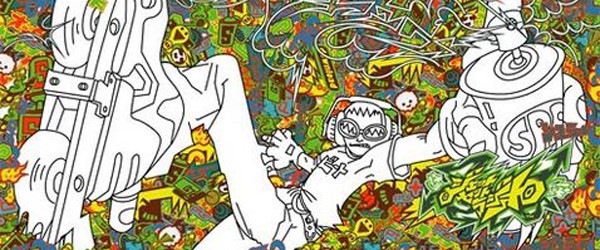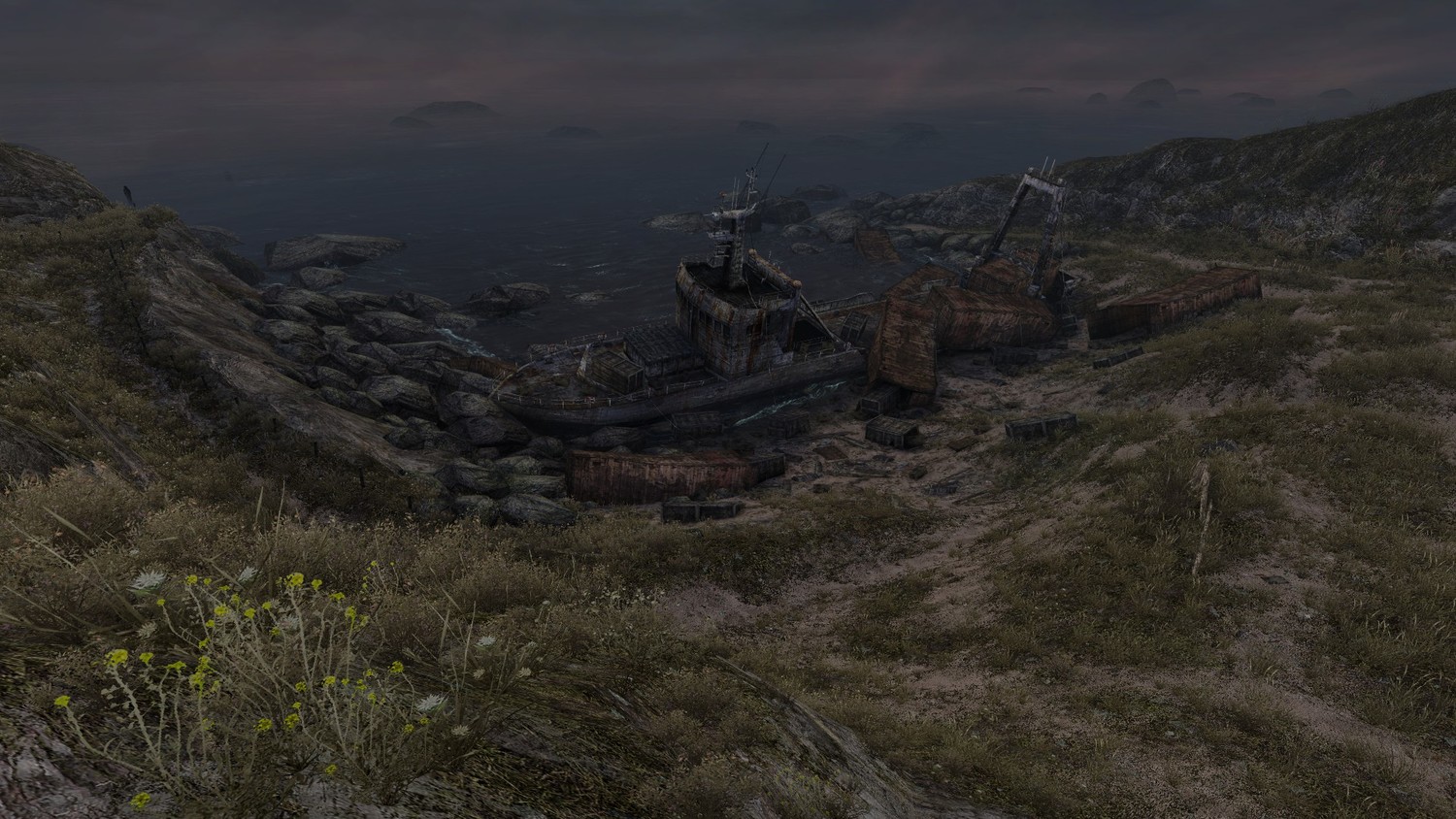
Review: Jet Set Radio
Posted by Eric G on September 27th, 2012 | 0 Comments | Tags: Dreamcast , Jet Set Radio , Sega
It’s been quite some time since I picked up a controller to play Jet Set Radio. I bought and played the game when it originally released in 2000 and have replayed it sometime in between then and now. I was excited when the game got announced as a DC classic making its way to PSN. Some of my enthusiasm waned after playing the game a bit at PAX East, but after a few days with it, I’m glad to say Jet Set Radio is as wonderful now as it was back then. Let’s hit the streets of Tokyo-to to revisit one of the Dreamcast’s most original titles, shall we?
Jet Set Radio was one of, if not, the first mainstream games to feature graffiti and rollerblading as its core mechanics. It’s also one of the earlier examples of Cel Shading that I can think of. The story revolves around a group of graffiti artists known as the GGs who are fighting to tag the streets of Tokyo-to, a fictional city akin to modern day (year 2000) Tokyo. The narrator is Professor K, the DJ of Tokyo’s finest pirate radio station, Jet Set Radiooooo! The remainder of the story revolves around a mega conglomerate corporation CEO searching for a supernatural record in order to make a pact with the devil to take over Tokyo and the rest of the world. Yeah, it’s like that. The bulk of the story is told from behind Professor K’s turntables, but there are a few flashback sequences later on that mix things up a bit. It’s a zany plot that is easily ignored, especially once you start shredding the streets.
First of all, the game looks great. Some of the former DC classics brought to PSN failed their graphics exams. Sonic Adventure wasn’t presented in widescreen, Crazy Taxi has a ton of draw-in, etc. Jet Set Radio HD looks like it could have come out this year. It’s not perfect; there’s a bit of draw-in in the distance and some of the textures are unintentionally blocky, but for the most part it’s still a piece of eye candy, even after all these years. You start the game with a monkey see, monkey do tutorial. Gum shows you how to skate, tag, grind, etc., then you copy her to move on. It takes a bit of time and there should probably be an option to skip it, but if nothing else it gets you acclimated to the new control scheme. The left analogue stick moves, the right one controls a camera, the L2 button either snaps the camera behind your character or initiates tagging, and the R2 button sprints. When there’s an opportunity to spray, an icon appears over your head and you can press L2 to begin a series of quicktime events. Copy the movements with your analogue stick and you’ll be spraypainting like a champ in no time. Oh, and there’s the X button, which is used to – you guessed it! – jump. You can wall ride if you jump toward a wall on an angle, and you can also jump onto rails or the edges of platforms to grind on them. There isn’t much emphasis put on scoring points by performing tricks, but you’ll have to master most of them to get to hard-to-reach spots later on in the game. After you complete the tutorials, you’re crew is formed. Hop into the garage, check the mission map, and see what rival crews need to be sprayed out of town.
The garage is the hub spot in JSR. From there you can check out the network features, the music player, create your own graffiti, or see what missions are available. The ‘network features’ are Leaderboards and Trophies. None of my scores uploaded to the leaderboard so I couldn’t check out how I ranked among others, and the Trophies page just lists the 9 attainable trophies in the game. The music player is self-explanatory, but it is worth noting that the soundtrack to JSR is excellent. There are enough songs with enough genre variations to last the entire game without sounding redundant. You can create your own graffiti for each size (small, medium, large) to use while you’re playing the game. Items called “graffiti souls” are hidden around each level that unlock new graphics to use in the graffiti editor. If I remember correctly, you could share your graffiti over the internet in the Dreamcast version of the game. This feature isn’t present here, unfortunately. If you select the map, you can choose missions based in three different boroughs of Tokyo-to: Benten-cho, Shibuya-cho, and Kogane-cho. A couple of other locations show up later on (or earlier on (they’re in the flashback, I’m making a joke)).
Most levels require you to find the red arrows and spraypaint them. There is a set number of targets, and if you open up the mission map in the start menu you can see where they all are. At the end of a given mission, you’re graded on your speed and score on a scale of Jet, Nitro, Turbo, Engine, Motor, or Pedal. The first half of the game is spent in different closed-off areas of the boroughs (Kogane-cho 1, 2, or 3, for example), but later on the restrictions are lifted and you’ll have to traverse the entire borough (Kogane-cho 1, 2, and 3) to tag all of your targets. There are one-on-one “rival challenges” that act as further tutorials that teach new moves and get you familiar with how to move around new parts of boroughs. When you complete the challenge, you unlock that character to play in future levels. You can exit a level by skating way out of bounds. There’s a notification that pops up, telling you that you’re exiting, but I got forced out of levels against my will on a few occasions.
There were a few other things that held JSR back from a five-star review. Professor K’s voice acting is bad, simply put. The sound quality is static-ridden and his cheesy dialogue doesn’t stand the test of time. The cast of enemies is creative, including police dogs, jetpack machinegunners, helicopters, flamethrowers, grenadiers, and more. It’s tough to escape these enemies when they’re stationed directly in front of objectives, making it annoying to tag large spots later on in the game. The transitional points that get you from sub-borough to sub-borough aren’t indicated on mission maps, leading to a lot of getting lost and frustration in trying to find my way. The only other problem I had with the game is that though the controls work perfectly, the game is clumsy at points. I missed a handful of grinds, wall rides, and more because of either a wonky camera or for no good reason at all. Other than that, JSR HD is a well-crafted rerelease of a classic videogame. If you’ve never played it, I highly recommend it, and if you have, then I recommend giving it another go.
A copy of this game was provided by the publisher for review purposes. For more info on our review policy click here. This review is for the PlayStation 3 version of the game.
General Info
- Release Date: September 2012
- Price: $9.99, £6.49/€7.99
- Genre: Arcade, Graffiti, Rollerblading
Score:
What I Like:
- The game looks great
- Thumping soundtrack
- Lot of content
What I Dislike:
- Professor K
- Clumsy camera/controls




